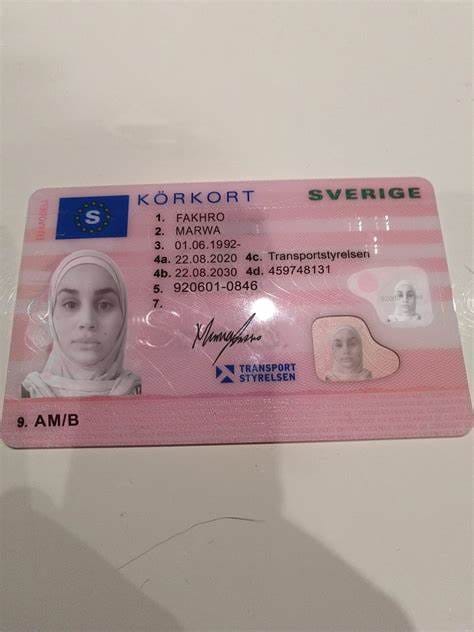10 Inspiring Images About Buy A1 Driving License
페이지 정보

본문

The Comprehensive Guide to Legally Obtaining a Driving License
Driving is a fundamental ability for many, providing the freedom to travel where and when you desire, typically making life more convenient and pleasurable. However, obtaining a driving license is a process that needs understanding, perseverance, and adherence to legal treatments. This guide aims to supply an in-depth introduction of the steps one need to follow to legally acquire a driving license, highlighting essential factors to consider and frequently asked concerns to ensure a smooth and hassle-free experience.
Comprehending the Basics
Before diving into the application process, it's vital to comprehend the fundamental requirements and types of driving licenses readily available. Driving laws differ substantially from nation to nation, and even within different states or provinces within the same country. Typically, there are a number of types of driving licenses, consisting of:
- Learner's Permit: This is typically the primary step in the procedure, enabling new drivers to get experience under supervision.
- Provisionary License: Issued after passing a standard driving test, this license normally includes limitations and is a stepping stone to a complete license.
- Complete Driver's License: Once all the necessary requirements are satisfied, chauffeurs can get a full license, which provides total driving benefits.
- Industrial Driver's License (CDL): Required for those who wish to operate industrial cars, such as trucks or buses.
Actions to Obtain a Driving License
1. Research Local Driving Laws
The first action in getting a driving license is to investigate the particular requirements in your location. Go to the main website of your regional Department of Motor Vehicles (DMV) or comparable company to find in-depth information about the licensing procedure, including age restrictions, needed documents, and charges.
2. Prepare Required Documentation
Each jurisdiction has its own set of files that must be submitted to make an application for a driving license. Frequently required documents include:
- Proof of Identity: A passport, birth certificate, or state-issued ID.
- Proof of Residency: Utility costs, lease contracts, or other main files that validate your address.
- Social Security Number (if appropriate): In some nations, a social security number or equivalent is needed for identification.
- Vision Test Results: Some places need a vision test before issuing a learner's authorization or license.
3. Take a Driver's Education Course
Many states and nations require new drivers to finish a driver's education course. These courses are created to teach the guidelines of the roadway, traffic laws, and safe driving practices. They can be completed online or in a classroom setting and frequently include both theoretical and useful components.
4. Look for a Learner's Permit
Once the needed documents is all set and the driver's education course is finished, the next step is to get a student's permit. This generally includes checking out the DMV or submitting an application online. You will also need to pass a written test that covers traffic laws and driving knowledge.
5. Practice Driving
With a learner's permit, you can begin practicing driving under the guidance of a certified grownup. This is an important action in building your confidence and skills behind the wheel. It's likewise important to gain experience in numerous driving conditions, such as night driving, highway driving, and driving in severe weather.
6. Arrange and Pass the Driving Test
After getting adequate driving experience, you can set up a driving test with the DMV. The test will examine your capability to safely run a lorry and follow traffic laws. You will need to bring an effectively registered and insured lorry to the test, and the inspector will assess your driving skills on a predetermined path.
7. Use for a Provisional License
If you pass the driving test, you will normally receive a provisionary license. This license might feature limitations, such as a curfew or a limitation on the variety of travelers you can have in the vehicle. These limitations are created to minimize the danger of mishaps and help new motorists accustom to the roadway.
8. Upgrade to a Full License
As soon as you have actually held a provisionary license for the necessary period and met any extra requirements, you can upgrade to a complete driver's license. This process normally involves a basic application and might need a retest or additional paperwork.
Tips for a Successful Application
- Start Early: Begin the process as soon as you meet the age requirement to offer yourself ample time to prepare.
- Stay Informed: Keep up-to-date with any modifications in driving laws or DMV treatments.
- Practice Regularly: Consistent practice is key to building confidence and enhancing your driving abilities.
- Stay Calm During the Test: Anxiety can impact your performance, so take deep breaths and remain focused.
- Follow DMV Instructions: Pay attention to the directions supplied by the DMV and the inspector throughout your test.
Often Asked Questions (FAQs)
Q: What is the minimum age to get a student's license?
A: The minimum age differs by jurisdiction. In the United States, it generally ranges from 15 to 16 years old. In the UK, the minimum age is 17. Examine your local DMV site for specific details.
Q: Can I get a driver's license online?
A: Some jurisdictions enable you to complete parts of the application process KöPa A1 KöRkort Online, such as submitting kinds and scheduling tests. Nevertheless, you will normally need to visit a DMV workplace in person to submit required documents and take the driving test.
Q: What happens if I stop working the driving test?
A: If you stop working the driving test, you can typically retake it after a certain period. This period differs by location, however it is typically a few weeks. It's a great concept to practice more before retaking the test to improve your possibilities of success.
Q: Can I drive alone with a learner's permit?
A: No, a learner's authorization generally needs you to be accompanied by a licensed grownup, generally over 21 years of ages, who is seated in the front passenger seat.
Q: Is a vision test required to get a driving license?
A: Yes, a lot of jurisdictions require a vision test to ensure that you can securely operate a vehicle. You can normally take this test at the DMV or with an authorized optometrist.
Q: How long does it take to get a complete driver's license?
A: The time needed to acquire a complete driver's license varies depending on your jurisdiction and the specific steps involved. Generally, it can take several months, including the time needed to complete a driver's education course, hold a learner's authorization, and pass the driving test.
Q: Can I use a provisional license to drive for work?
A: It depends on the limitations placed on your provisional license. Some provisionary licenses enable you to drive for work, while others might have specific limitations. Examine your license for details or call the DMV for information.
Q: What is the distinction between a student's license and a provisional license?
A: A learner's permit is the very first stage of the licensing process and allows you to drive only under supervision. A provisional license, on the other hand, grants you more driving advantages however may still have some restrictions, such as a curfew or traveler limits.
Q: Can I apply for a business driver's license (CDL) without a complete driver's license?
A: No, you generally require a complete driver's license before obtaining a CDL. A CDL is a specialized license that needs extra training and testing, and it is only provided to those who have actually demonstrated the capability to safely run a standard automobile.
Q: What should I do if I lose my driving license?
A: If you lose your driving license, you must report it to the DMV and request a replacement. You may require to offer evidence of identity and pay a fee. It's also an excellent idea to alert your insurance coverage company and any other pertinent celebrations.
Acquiring a driving license is a considerable turning point that opens up new opportunities and increases independence. By following the steps laid out in this guide and remaining informed about local laws and requirements, you can make sure a smoother and more successful licensing process. Remember that driving is a serious duty, and taking the time to find out and practice is necessary for your security and the security of others on the roadway.

- 이전글Interesting u31 Gamings at Leading Thailand Casino 25.07.17
- 다음글Exciting u31 Games at Leading Thailand Gambling Establishment 25.07.17
댓글목록
등록된 댓글이 없습니다.